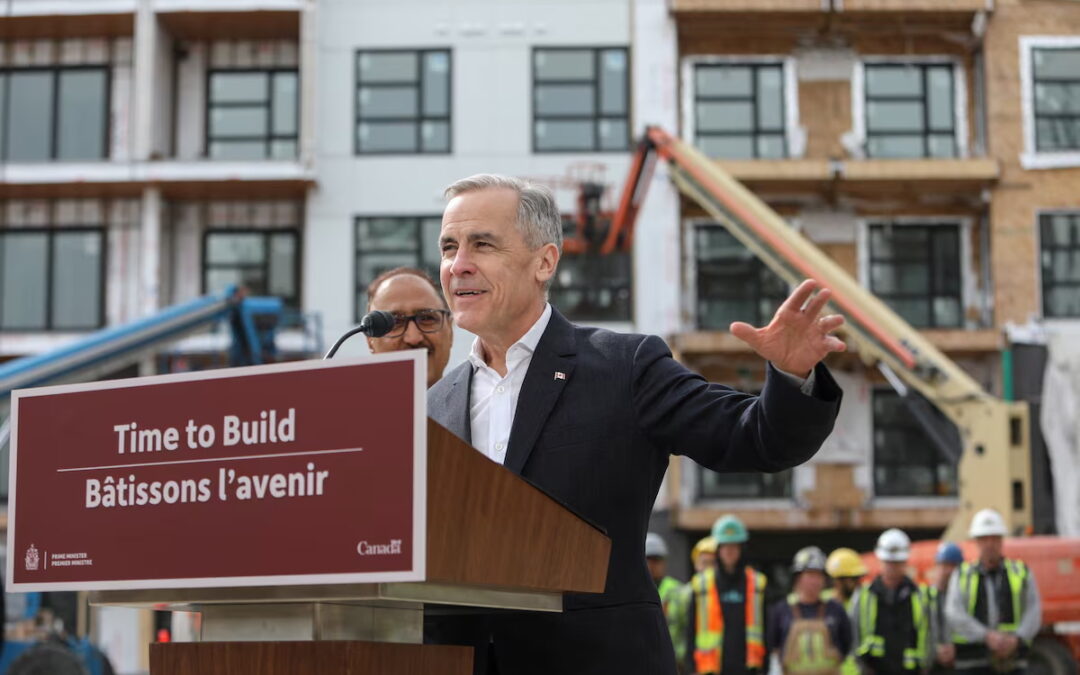
The Liberal Housing Plan
The Liberal Housing Plan
La version française de ce billet se trouve ici.
On March 31, the Carney Liberals unveiled what they called “Canada’s most ambitious housing plan since the Second World War.”
Here are seven things to know:
1. Their plan to eliminate GST on new builds would mostly benefit private developers. They want to eliminate the GST “for first-time homebuyers on homes at or under $1 million.” In reality, GST charged on new homes is not like GST charged on new cars—with homes, the GST is hidden to the consumer (it’s the builder who pays GST on inputs). Ergo: this proposal would likely spur some new construction; but the extent to which savings would be passed on to buyers remains uncertain.[1]
2. Creating a federal entity that acts as a developer would be inherently challenging. The Liberals are proposing to create a federal entity that would act as a developer for affordable housing. However, housing development requires local knowledge—e.g., with respect to the geographic differences between downtown Toronto and rural Nunavut, as well as differences in local municipal bylaws. While funding from Ottawa can be hugely helpful in spurring development, public servants living there may not be as well-placed as local officials to get housing built.
3. The Liberal proposal to encourage prefab housing is sensible, especially in light of current labour challenges. The Liberal Housing Plan proposes “$25 billion in debt financing and $1 billion in equity financing to innovative Canadian prefabricated home builders.” It’s both easier and faster to train a person to work on a production line (for prefab housing) than to train a person to work on a construction site (for stick-built construction). Having said that, this proposal likely wouldn’t fully address the many capacity challenges in Canada’s construction industry, including those pertaining to labour.
4. When it comes to assistance to the affordable housing sector, grants are more helpful than loans. The Liberal Housing Plan proposes “$10 billion in low-cost financing and capital to affordable home builders.” They say much of it would be targeted towards supportive housing, Indigenous housing, emergency shelters, student housing, and housing for seniors. The wording in the Plan does not clearly articulate how much of this would come in the form of loans vs. grants. Low-cost loans do help spur affordable housing, but not as much as grants do.
5. Cutting municipal development charges would help spur development—but doing so would also create challenges pertaining to geographical equity. The Liberal Housing Plan promises to “cut municipal development charges in half for multi-unit residential housing and work with provinces and territories to make up the lost revenue for municipalities for a period of five years.” Since the federal government doesn’t actually collect municipal taxes, this entails creating a federal subsidy to offset municipal costs of building infrastructure associated with the new construction of homes. This would likely encourage construction, but would ultimately send more money to municipalities that charge higher development costs (and this would raise questions of fairness).[2]
6. The Liberal proposal to reintroduce the MURB might prove costly to the federal treasury. According to the Liberal Housing Plan: “We will reintroduce a tax incentive which, when originally introduced in the 1970s, spurred tens of thousands of rental housing across the country. Known as the Multiple Unit Rental Building (MURB) cost allowance, this policy helped produce nearly 200,000 units in seven years (1974-81).” With the MURB, if you were a high-income individual and had a rental property, you could write off losses against your professional income. While viewed as a tax deduction that spurred a lot of new construction, it was ultimately discontinued largely because it was seen as costly to the federal treasury (in terms of foregone tax revenue).
7. The Liberal Housing Plan is almost totally silent on homelessness. According to the Plan: “We will immediately develop homelessness reduction targets with every province and territory to inform Housing First investments, improve access to treatment, and end encampments community by community.” And as discussed above, there would be some support for both supportive housing and emergency shelters. Absent from the Plan is any mention of further subsidy for either the Rapid Housing Sub-Stream of the Affordable Housing Fund or Reaching Home.
In sum. This plan, if implemented, would likely spur more supply—for both ownership and rental units. However, it seems sparse on grants that could help low-income renters and persons experiencing homelessness. Further, its proposal to make the federal government a developer is probably a bad one.
I wish to thank Sean Gadon, Jenny Morrow, Steve Pomeroy, Shayne Ramsay, Marion Steele, Ray Sullivan, Greg Suttor, and Annick Torfs for assistance with this blog post. Any errors are mine.
[1] Currently, Canadians buying new construction homes are required to pay 5% GST, unless fair market value of the home is under $450,000. GST does not apply to resale (only new).
[2] In decades past, there was considerable federal and provincial financing of municipal infrastructure across Canada. These days, we lack the same federal-provincial involvement. That’s one reason municipal development charges have escalated in recent years.


